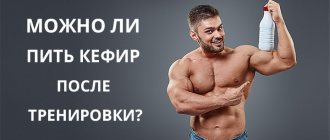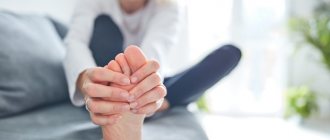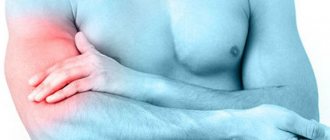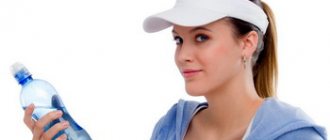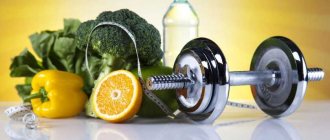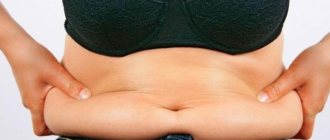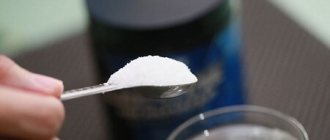Traditionally, people associate swelling on the body with the accumulation of excess fluid in the body, but swelling in muscle tissue has a different nature. Tumors and pain in the muscles are caused by the accumulation of protein compounds produced by the hormonal system. To the touch, such swelling is similar to compaction, which causes pain when moving.
Causes of edema
This inflammatory process can begin as a result of the accumulation of waste products from muscle cells. During illness, stress and other factors, protein compounds accumulate in the blood. In order to reduce their concentration in the circulatory system, the body transfers excess to muscle tissue.
When lymph does not have time to remove all protein compounds, they accumulate and take up more and more space. The cells grow and press on each other, causing muscle pain. Swelling in the muscles of the lower extremities, chest, back or arms does not go away on its own. If treatment is not started, swelling can gradually lead to serious complications:
- numbness of the limbs;
- hypertension;
- osteochondrosis;
- colitis;
- dysplasia;
- development of malignant tumors.
Muscle swelling after exercise
Inexperienced athletes sometimes wonder why muscles swell after training? The main reason is the accumulation of lymphatic fluid in the muscle tissue. This happens for the following reasons:
- high loads in the gym with a sedentary lifestyle (for example, people with sedentary work);
- starting training after removing tight shoes that impeded blood flow (for this reason, mainly the calf muscles and sometimes the thighs swell);
- the habit of sitting with your legs crossed (this leads to swelling of the leg muscles).
If muscle swelling is caused by training loads, the swelling will go away on its own within a few hours.
Edema: what causes it and what to do – Zozhnik
Swollen ankles after running or sports training, swollen calves or feet at the end of the working day, or after a car ride. All these are signs of swelling. Such a nuisance can affect anyone - both a non-athletic person and someone leading a healthy active life. Let's figure out what nutritionists, trainers, doctors and scientists think about this.
What is edema?
Edema is the medical term for the accumulation of fluid in soft tissues that occurs due to abnormal retention of tissue fluid.
Muscles, bones, brain and the entire human body as a whole consist, depending on age and weight, of 50-86% water (the older a person is, the “drier” he is; the proportion of water in us decreases with age). A third of this amount is in the intercellular space.
Swelling occurs when small blood vessels release too much fluid into the intercellular space. As a result, swelling occurs and edema develops, which can be localized in any part of the body [1].
Edema can be local or general, explains Vladimir Yashin, doctor and author of the textbook “Healthy Lifestyle” [2]. General edema is when excess water in the body exceeds 2-3 liters, it is accompanied by swelling of the tissues of the entire body. Such swelling can occur with diseases of the kidneys, gastrointestinal tract, and heart. Local edema affects specific body parts or organs [3].
Zozhnik will not go into all the details of the classification of edema, of which there are more than ten types (lymphedema, macular, cerebral edema, pulmonary edema and others), resulting from serious dysfunctions, for example, of the heart, kidneys or lymphatic system. We are more interested in the so-called functional and peripheral - for example, swelling of the extremities at the end of the working day, after prolonged standing or sitting [4].
The main cause of edema is lack of activity.
Water retention in the body can occur for various reasons - pregnancy, menstruation, heat, illness or injury. But it happens that there are no obvious reasons or pathologies, but in the evening the arms or legs still swell, the foot does not fit into the shoes or the ring on the finger “squeezes.”
Barring serious health problems, the main cause of swollen feet is prolonged inactivity . When, for example, a person sits or stands all day. Lack of regular physical activity can also lead to swelling of the limbs. And there are two good reasons for this.
Firstly, insufficient blood circulation . “It’s so designed by nature that the body has a venous-muscular pump to supply blood to the heart,” explains Denis Borsuk, candidate of medical sciences, vascular surgeon and phlebologist [5].
Most of the time a person occupies a vertical position and the blood, as if “automatically”, flows down under the influence of gravity. But in order for it to circulate and rise up to the heart again, the leg muscles must work. When walking, they contract and put pressure on large veins. Under the influence of such “pumps,” blood is pushed from the feet to the heart.
And to prevent the blood flow from returning back, the veins are equipped with special valves that immediately close when blood is supplied.
The second reason for swelling of the limbs from lack of activity is lymph stagnation . Thanks to lymph, the body is cleansed of salts and metabolites, and immune cells mature in it. The human immune system depends on this “pure water” (this is how the word “lymph” is translated from Latin).
But unlike the circulatory system, the lymphatic system does not have a “motor” that would pump it throughout the body. Lymph circulation occurs due to muscle contraction. If the muscles do not work, the lymph tends to stagnate, and in order to somehow dilute it, the body “retains” water, hence the swelling.
Conclusion: if a person is healthy and moves regularly during the day, then he should not have edema. And, on the contrary, even in completely healthy people who are forced to sit or stand for a long time (for example, because of work), the feet or calves may swell in the evening.
Other reasons why swelling occurs
Dr. Evdokimenko, academician of the Russian Academy of Medical Sciences, lists other reasons why edema may occur:
- The most common is taking certain medications, for example, medications for high blood pressure;
- Venous edema resulting from varicose veins. The swelling is not symmetrical, expressed to varying degrees on both legs;
- Cardiac edema is symmetrical on both legs, decreases in the morning, intensifies in the evening. Rarely expressed without accompanying cardiac symptoms. Swelling increases in the morning and decreases in the evening;
- Renal edema is symmetrical, more pronounced in the morning, and decreases in the evening. Swelling of the upper body is more typical;
- Edema in hypothyroidism - characterized by causeless swelling of the face and legs, decreased body temperature, and the appearance of chilliness;
- Back disease is the rarest cause, characterized by asymmetrical swelling of the legs;
- Edema in diabetes mellitus,
- Consumption of large quantities of salty, sweet and spicy foods,
- Drink plenty of fluids at night
- Lack of protein in the diet,
- Late pregnancy
and this is not a complete list of possible reasons. [6]
Why do muscles swell after exercise?
Doctor of Medical Sciences, Professor Sergei Bubnovsky speaks separately about the dangers of an incorrect and inactive lifestyle [7].
Often after a workout in the gym, especially for beginners, it is difficult to fit into your favorite skinny jeans the next morning - this is due to swelling. It would seem that spending time would be even more active, but this is also possible.
According to Frank Yemi, who holds a bachelor's degree in medical physiology, the culprit is excessive stress on the muscle, which provokes the appearance of many microtraumas and inflammation, requiring increased blood flow to the affected area.
It is important to understand that mild swelling is normal during intense exercise. To grow muscles in volume or improve their endurance, “building materials” are needed - nutrients that are supplied by the “water” route. Yes, “extra” liquid also means additional grams on the scale, but don’t despair - this is a necessary part of the process of improving your physical qualities.
Yemi believes that the best way to prevent excessive swelling after training is a clear awareness of the capabilities of your own body and competent calculation of loads. He recommends following a work/rest regime: not overloading during workouts and recovering between them.
Excessive exercise can lead to rhabdomyolysis, which is a common concern among overexertion-loving CrossFit enthusiasts. Rhabdomyolysis is a very rare and serious disorder caused by overworking muscles, causing fibers to break and be released into the bloodstream, which can lead to kidney damage or, worse, kidney failure.
According to Crossfit Games bronze medalist Erast Palkin, swelling immediately after training, combined with symptoms such as nausea, fever and partial incapacity, may indicate rhabdomyolysis - the destruction of muscle tissue. It can be provoked by the presence of myopathic diseases, heredity and work at an extremely exhausting rhythm without stopping .
Additional risk factors are dehydration, working in a stuffy room or with reduced immunity (presence of a concomitant acute illness).
In order not to put yourself at risk, warm up before training, drink fluids during the process, and most importantly, monitor your well-being and if nausea or dizziness occurs, you should at least slow down the pace or proceed to the end of the workout.
Foods that cause swelling
In addition to the above measures, such as healthy exercise, you can fight edema with nutrition.
Nutritionist Irina Lizun recommends [11] that in case of swelling, avoid synthetic food additives (such as monosodium glutamate) and foods containing a lot of salt: all semi-finished meat products - sausages, sausages, smoked meats, marinated products.
By the way, processed meat products are harmful not so much because they contribute to edema, but because they are carcinogenic - they increase the risk of certain types of cancer. Therefore, eliminating them from your diet completely is a good idea for many reasons.
The nutritionist also recommends adding foods rich in coarse fiber (including non-starchy vegetables, herbs, fruits) and low-fat fermented milk products to your diet. Also, swelling can provoke both overeating and sudden hunger - so we recommend that you always stick to your calorie allowance.
How to diagnose swelling?
If pain or muscle swelling occurs, it is better to go to the doctor. The specialist begins the diagnosis with examination and palpation of tissues, and the patient is also sent for an x-ray. The tumor undergoes histological examination.
An x-ray reveals solid tumors, and the doctor determines its interaction with nearby bones. Angiography provides information about the blood supply to the swollen area and clarifies the location of the lesion.
Diagnosis of edema in soft tissues sometimes requires computed tomography and magnetic resonance imaging to clarify the area of the oncological process if the tumor is malignant. These diagnostic methods also provide information about neoplasms growing deep into the internal organs.
What to do if your muscles are swollen and painful: treatment plan
When the muscles of the legs, arms, neck, back or other parts of the body hurt and swell, the treatment regimen is approximately the same in all cases. The doctor determines the causes of pain and the factors that provoked the disorder, and then draws up a complex of therapy.
If swelling is visible on the skin, but there is no temperature, purulent inflammation or other complications, the doctor prescribes treatment without medications:
- massage and rubbing of muscles with warming gels and ointments;
- manual therapy aimed at stimulating local blood circulation;
- physiotherapeutic procedures to relieve inflammation;
- physiotherapy;
- acupuncture.
For more serious pathologies, when pain due to muscle swelling is acute and severe, non-steroidal anti-inflammatory drugs for internal and external use are required. Sometimes doctors prescribe muscle relaxants and even psychotropic drugs. Everything is individual, so you should definitely consult a doctor.
When symptoms of a malignant tumor occur, even more complex complex therapy using serious drugs is required. Next, let's look at the reasons why muscles swell in different parts of the body.
What you can do yourself
It is possible to relieve the unpleasant and painful sensations of swelling on your own:
- Try to raise your legs above heart level more often. Spend at least an hour in a position with your legs raised.
- After swelling caused by attending a workout, you should ensure maximum rest. Lie down for a long time.
- After consulting with your doctor, you can take anti-inflammatory drugs. The products relieve pain and partially swelling.
- Try not to sit or stand for a long time.
- It is permissible to wear special compression garments. Nowadays pharmacies offer a wide range of stockings and tights.
- Try to adjust the menu, reduce the use of salt as much as possible. Do not get carried away with flour products and sweets. If possible, you should eat boiled or baked food.

Proper diet
Swelling of the calf muscles
Swelling and pain in the calf muscle is a symptom that many have encountered. It causes discomfort, accompanied by heaviness and pain. Sometimes the swelling in the calf muscles is minor and almost unnoticeable, but this is also an abnormal condition that needs to be given due attention.
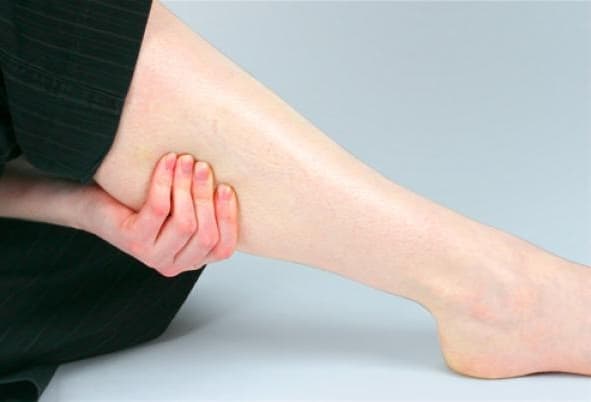
There are several reasons for the appearance of swelling of the legs, causing mild or severe pain:
- phlebeurysm;
- injuries;
- excessive stress on the legs;
- cardiovascular disorders;
- kidney and liver diseases;
- wearing uncomfortable and tight shoes.
In these cases, eliminating the original cause that caused the problem allows you to get rid of pain in the legs and remove swelling.
Pain and swelling of the thighs
When the muscles swell in the thigh area, this also indicates a variety of pathologies that require therapy. This happens due to a certain disorder or disease:
- getting injured while pumping the quadriceps muscle in training;
- tendon damage (this occurs more often in older people);
- problems with blood supply to the thighs;
- joint diseases.
Do not put off visiting a doctor, as swelling and pain will not disappear on their own.
In what cases is a doctor needed?
Although in most cases you can manage swelling on your own, in some situations you may need help from a doctor. There are several reasons for this:
- acute pain does not go away for more than three days;
- there is a suspicion of injury;
- other symptoms appear that are not similar to a person’s usual condition after training: fever, frequent urge to go to the toilet, general weakness.
If there has been an injury, you should immediately visit a traumatologist. A urologist deals with kidney diseases. If you suspect heart failure, you need the help of a cardiologist. Before going to specialists, in any case, you should consult a therapist: he will help narrow down the range of possible causes.
The doctor will examine the swelling, ask about the time of its appearance, chronic diseases, and the circumstances that preceded the appearance of the swelling. In some cases (usually when injury is suspected), an x-ray is ordered. If a tumor is suspected, an MRI or CT scan is prescribed.
A rarer health condition associated with finger swelling during physical activity is called hyponatremia, a situation in which your body has lower levels of normal sodium. Strenuous athletes, such as marathon runners, who perform high mileage daily and drink large volumes of water, are among the small population that is likely to develop hyponatremia.
Excessive amounts of water can dilute the body's natural sodium levels, throwing off electrolyte balance. Swelling of the arms, mental confusion, and vomiting are all signs of hyponatremia; The condition must be treated immediately to prevent possible complications such as brain damage and coma.
Swelling of the arm muscles
The causes of pain and swelling in the arm muscles are more varied. Doctors treating such tumors attribute the following to the causes of such conditions:
- intoxication of the body;
- drug and alcohol addiction;
- stress;
- parasitic diseases;
- infectious and viral diseases;
- autoimmune disorders;
- injuries during physical activity.
For example, sepsis, streptococcus and staphylococcus, as well as bone osteomyelitis provoke purulent inflammation of the arm muscles, which causes abscesses and necrotic lesions to appear in the tissues. Treatment should not be delayed if the muscles of the upper extremities are constantly sore and swollen, as this can cause shortening and deformation of the fibers.
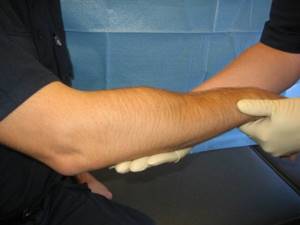
Swelling of the legs
Edema is considered to be a consequence of the accumulation of lymphatic fluid in various parts of the body. Edema is considered the result of an imbalance in the body's tissues and venous vessels, from which excess fluid is released.
Edema is often caused by various types of diseases. Sometimes it happens that a person is healthy, but swelling is present. Swelling often appears after active sports. It is not clear why my legs swell after exercise.
Often the location of edema can tell about the cause of the lesion. Accurate information on the occurrence and further control is provided by a competent doctor.
Tumor in the pectoral muscles
One common cause of swelling, swelling and tenderness in the pectoral muscles is myositis. The symptoms gradually increase, but it is important to prevent the disorder from worsening. In acute periods, the pain radiates to the arms and neck, and upon palpation, tension in the pectoral muscles is felt. Myositis, which causes swelling and pain in this area, can be identified by the following signs:
- pain on the surface of the chest muscles;
- swelling and swelling;
- increase in local temperature;
- feeling of pain when swallowing;
- skin redness;
- shortness of breath and cough;
- headaches.
The pecs may also swell if an athlete has pulled a muscle or suffered another injury.
Back and neck muscles
The muscles of the back, lower back and neck can swell and ache not only after training, but also for other reasons. For example, people who work outdoors all year round are at risk. Common reasons include staying in uncomfortable positions for a long time, which often happens to drivers, musicians, and massage therapists. This leads to poor circulation and poor nutrition of muscle tissue. Seals appear and dystrophy develops. Other causes of swelling in the muscles of the neck, back or lower back include:
- injuries during training (most often sprains or physical strain);
- injuries in everyday life: bruises, dislocations of the vertebrae;
- stress causing muscle spasms;
- hypothermia during physical exertion.
In the neck area, the most vulnerable muscle is the cleidomastoid muscle, which is quite easy to pull.

In rare cases, people experience pain and swelling in the muscles in their feet, shoulders, or armpits. If the problem is not intense training, that is, the swelling does not subside within a day, you need to go to see a doctor. He will determine why the muscles are swollen and prescribe the necessary treatment.
Special gymnastics
To reduce swelling, special exercises are prescribed that will have a beneficial effect on the general condition of legs with frequent swelling.
Gymnastics includes exercises:
- Starting position – standing. In a relaxed state, lift your toes one at a time.
- Previous starting position. It is worth raising yourself on your toes and remaining in this position for at least 10-15 seconds.
- Starting position – standing on your toes. From the accepted position, perform low jumps.
- Sit as comfortably as possible and relax your legs. Alternately lower and raise your toes. Try to hold them at the top for a few moments.
The set of exercises is recommended to be carried out in two or three approaches. Do each exercise 10-15 times. You should not ignore simple exercises, even in the presence of regular physical activity, by attending a training session.
Treatment of edema will become extremely effective if you use the right combination of traditional medicine and folk remedies. Remember, treatment of edema is carried out only with the permission of a doctor. Practicing self-medication can sometimes harm your health, and uncontrolled use of medications will lead to disruption of the functioning of organs and systems of the body.
Character of tumors
Tumors that can be found on muscles are of a different nature - benign and malignant. Benign ones include leiomyoma and rhabdomyoma.
Leiomyoma is localized on smooth muscle, regardless of age. If treatment is not taken, the tumor can turn malignant. The swelling develops slowly and manifests itself as ulcers on the surface of the skin. Rhabdomyoma is localized primarily on the transversely striated muscles of the chest, back, arms and legs, as well as in the neck.
Malignant muscle tumors are dangerous, so they cannot be avoided without medical help. One of the varieties is rhabdomyosarcoma, which develops similarly to rhabdomyoma, but is of a low-quality nature. Most often, pathologies develop in the thighs and calf muscles of adults.
Less common is malignant leiomyosarcoma, which affects smooth muscle, mainly in women. Localized on the trunk and lower extremities, accompanied by ulcers on the surface of the skin. One of the most dangerous muscle tumors is osteoclastoma, which requires urgent surgical intervention.
Be attentive to your body and do not allow tumors to develop. If your muscles swell frequently, be sure to see a doctor and get a diagnostic test to avoid serious health problems in the future.
Folk remedies
Without the help of doctors, in the distant past, women struggled with swelling of the legs. Over a long period of time, an abundance of effective recipes have been formed, after the use of which relief will come:
- Birch leaves were often used to combat swelling. They filled canvas bags with them and placed the legs there. For three to four hours, my feet were actively sweating. Through a series of procedures, swelling will significantly decrease or disappear altogether.
- A freshly prepared infusion of berries and elderberry bark will help in the fight.
- Compresses made from wax, olives and oil give a good effect. A homogeneous composition is wrapped around problem areas on the body.
- A garlic mask will help reduce swelling. To prepare the composition, you will need to chop the head of garlic, pour boiling water and leave for 40 minutes. The cooled mixture is rubbed into problem areas. After half an hour, wash your feet with cool water.
- Ice, which should be regularly rubbed on your feet in areas of swelling, will help relieve discomfort.
- Foot baths are made. Add 2 tbsp per liter of water. l. sea salt. During the water procedure, it won’t hurt to give a light massage to problem areas.
People prone to swelling of the feet should forget about using too hot water. Water procedures with hot water will cause dilation of venous vessels, causing an imbalance of lymph fluid. After training, it is better to take a cool shower.
